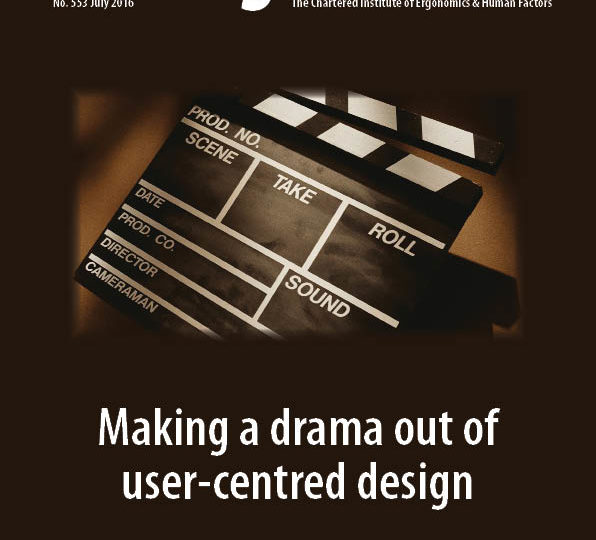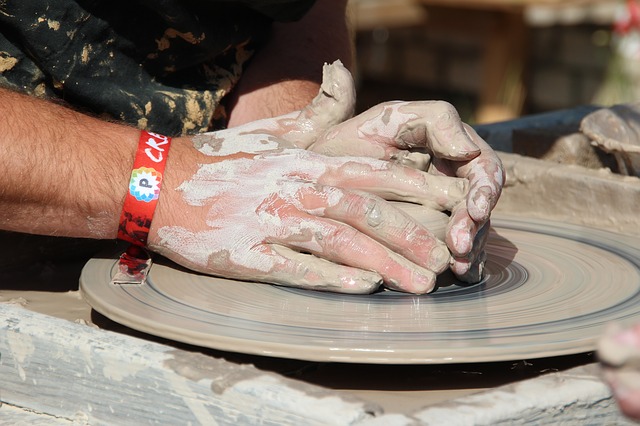As ergonomics and design consultancy CCD celebrate 40 years of business this year, director David Watts looks back over the development of human factors in design and describes some of the insights from the high-profile projects CCD has been involved in.
—————–
I’ve always had this view that CCD is somewhat unusual in its combination of ergonomists and designers when you look across other ergonomics consultancies. We have always been, at our core, an ergonomics consultancy, but I think I have lead us to now increasingly think about ourselves as a design practice. This has been a journey and I think when I started we were very much an ergonomics consultancy that did some design. We certainly don’t try and compete with the great work other consultancies do around safety, risk and some of the more organisational issues. We have always been about the relationship between ergonomics and design and how one informs the other. So these are some of the things we have learnt along the way about the role of human factors in design.
Communicating our value
One of the main challenges we face in design is to communicate our value. So what do we articulate as the value of our discipline? We often talk about the ability of a human factors person to adopt a dispassionate, empathetic state of mind. They can move away from an ego-centric view of a scenario and step into the shoes of a user…or at least they recognise that this is what they have to try and do and understand some of the biases that make this hard. But is that enough or does it have more to do with the way we do that and some of the tools and methods that we apply?
Back in 2011 and 2012 we worked on the Emirates Airline cable car in London that goes from near the O2 arena across the Thames to near the Excel centre. The promotional video shows an atrium packed with people but the reality has been slightly different because, as a mode of transport, it seems to join two places that people don’t want to travel between!
Anyway, we found a role in that project as the voice of the user. The project was fast paced – it had to be finished and operational before the 2012 Olympics, and it brought many different disciplines together to design a transport system that most were unfamiliar with, and a system that the eventual operator, Transport for London, had no experience of either. Understanding of users – passengers, operators, maintainers – was short on the ground. The designers, in particular the architects, accepted that they didn’t have time to think about this themselves and this is the important aspect. As an example, we became engaged in discussions about how you clean the glass on a station that is cantilevered over the water? We would build a concept of what the maintainer would do and how they would work and we were able to quickly strike out some solutions – ladders down the side of the station wall – and find other ways forward – mooring a barge under the station. We helped to put forward thinking about likely behaviours and responses, for example, when you might need to evacuate a cabin over the water during an emergency.
So we were able to demonstrate value in helping to articulate and understand the user needs quickly and work with the designers on solving the emerging problems. But the conditions of the project, in a sense, made this possible and gave us perceived value from the outset.
One of the challenges in design is making sense of the chaos – and one of the first things to do in this early-stage space is design research and gaining understanding. Market research asks lots of people questions and you a few get truths, for example, 40% of people were satisfied with the train service. Design research looks at only a few people but you gain lots of insights into their behaviour, needs and desires. But who should do this? A researcher, a human factors person or a designer? Or all of the above? To me this is an area where human factors plays alongside other disciplines; we have methods in common but also do things in different ways.
As an example of this, last year we won the commission to develop a new wayfinding strategy for the V&A in London. The museum has two main challenges to visitors: the building is complex in its layout (not all lifts and staircases reach every floor in the building), there are no obvious routes that take in all parts of the museum and orientation is difficult. The second problem is around purpose. The collection of the V&A isn’t as obvious as say the Science Museum or the Natural History Museum yet for many visitors to London it is still on their to-do list. As a consequence, many first-time visitors arrive with no sense of what’s in the V&A and what they might want to go and see.
To research these problems and to try and derive insights which could inform a design solution, the human factors people on the team wanted structure, repeatability and robust methods but the designers wanted to probe and provoke a response and see what happened, moving much more quickly. In the end, we ran a combination of approaches. But I’ll give you a flavour of the more design-orientated interventions we tried. The first was to offer an alternative map where, rather than a curator-led description of the collection, we used words that were about the aesthetic or the emotional response to provoke curiosity amongst the visitors.
In the second approach, we took away all the maps and covered up lots of the signs in a ‘Get lost at the V&A’ day. We wanted to see how people would respond with less information, we wanted to encourage exploration and serendipity without some of the behavioural constraints that are often observed. We also encouraged more interaction with volunteers and staff who were dressed in bright yellow t-shirts for the day with a personal message on their favourite discovery. And we encouraged visitors to share what they found.
So these were both interesting experiments but not in the sense of systematically testing something. We were poking something to see what would happen. But we did do some validation work, with a period of observations, contextual enquiry interviews with visitors and workshops with staff and curators.
What did we learn? There was definitely value in helping visitors understand the contents beyond the curatorial descriptions like ‘Europe 1700-1800’. We needed to explore how to enable this perhaps through imagery of exemplar treasures or even 3D representations. We needed a new visual way to help visitors build a mental model of the building and how the different ways to achieve vertical circulation linked to different parts of the building. Would we have learnt this from the more functional approach that the human factors team alone would have brought? I doubt it so I think one challenge for human factors is to have a wider range of tools and to bring in looser, more creative methods alongside those that give structure.
Being more strategic
The next of my challenges for HF in design is being more strategic and having early input to the process. Our complaint is being brought in too late, but this is perhaps not helped by the fact that we are good in the detail and have established some niches in doing good work assessing, reviewing and testing a design but this means that we are, by definition, coming in late as a design already exists. So how do we get in earlier defining the concepts, discovering options and their feasibility, and deciding how a project proceeds?
To read more about CCD’s strategy and David’s concluding thoughts, subscribe to The Ergonomist.
This article was adapted from a plenary lecture David presented at the CIEHF’s Ergonomics & Human Factors conference in April, and appeared in full in ‘The Ergonomist’.




